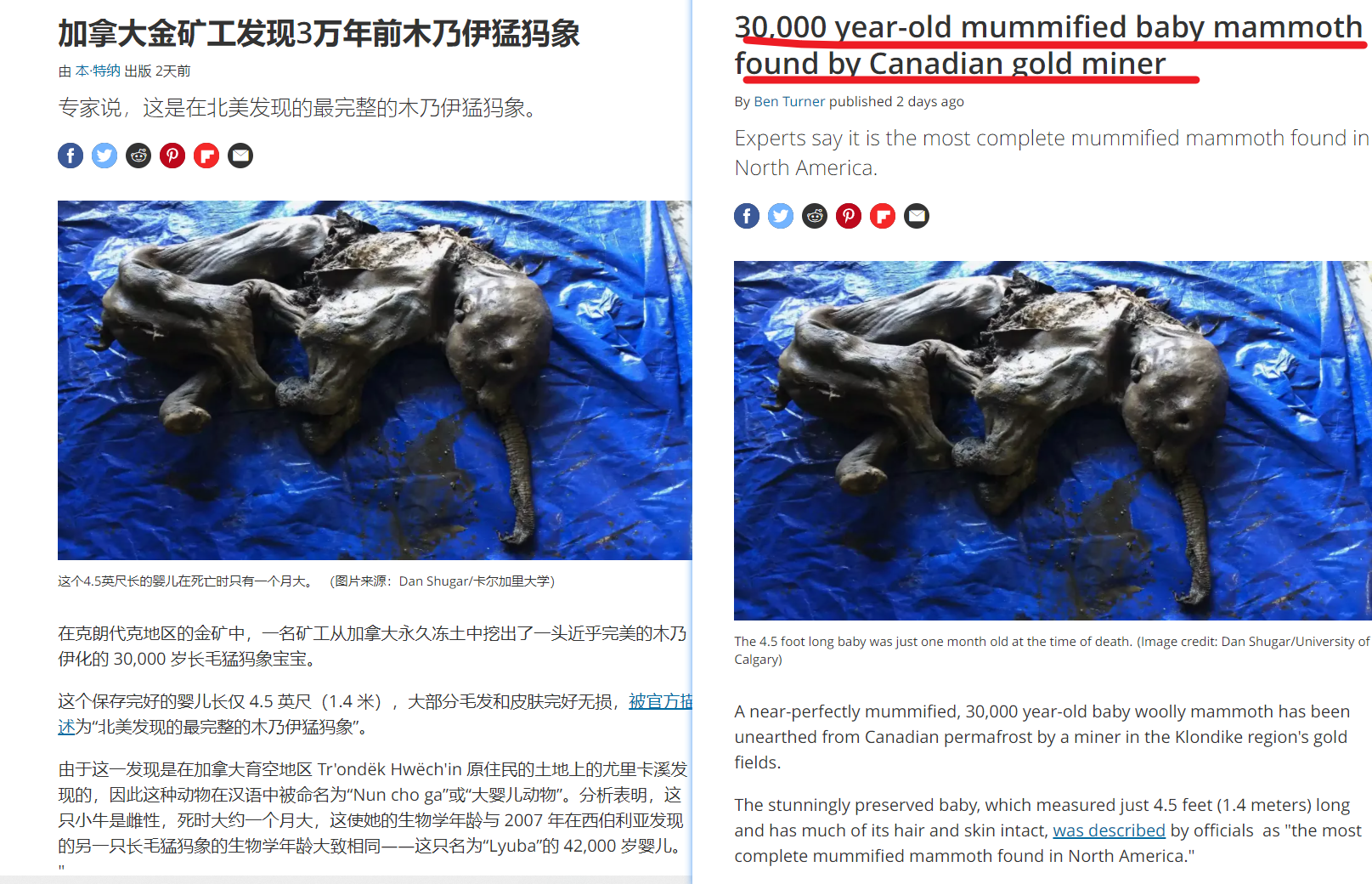On June 28, Live Science published an article in which a Gold Miner in Canada found a 30,000-year-old mammoth.
In a gold mine in the Klondike region, a miner dug up a near-perfect mummified baby 30,000-year-old woolly mammoth from Canadian permafrost.
The well-preserved baby, which is 1.4 meters long and most of its hair and skin intact, has been officially described as "the most complete mummified mammoth ever found in North America."

Miners find that this mammoth is more precious than getting a gram of gold, so we keep finding this in the frozen layer, discovering that, is it time for humans to reflect? Shouldn't humanity be on guard?
The thawing of the permafrost is not only the discovery of animals, but also the discovery of viruses, viruses that cannot be controlled.
The search for truth in scientific terms is admirable, but while paleontologists cheer for the search for prehistorically preserved animals and have another small climax in their personal academic careers, climatologists and microbiologists are worried about another crisis.
More and more ancient creatures are constantly coming out of the permafrost, which tells us that the tundra in the Arctic is suffering!
Mammoth cubs were discovered 30,000 years ago, and the mammoth extinction was only a few thousand years ago, multiple evidence suggests that in addition to the climate changes in the northern hemisphere, human activities are more likely to be the main driver of mammoth extinction, for two reasons, mammoths can only continue to migrate to high latitudes, high altitudes, cold areas, and the soil layers in these areas are perennial permafrost.
The thickness of the permafrost ranges from tens of centimeters to tens of meters, with a total area of more than 5.9 million square kilometers, most of which are located in the northern hemisphere.
The formation of permafrost is mainly formed by plants in cold areas; The temperature of the tundra zone is low, the plants are almost bryophytes, these plants grow and wither from generation to generation, and become a permafrost layer by layer, and then a large amount of organic carbon is sealed in the tundra, and bacteria, viruses, animals and plants at the same time are also buried in the frozen soil;
If with the change of climate, the frozen soil melts, or human beings randomly develop and excavate the permafrost layer, a certain kind of superbug and virus are released, and these bacteria and viruses are impossible for humans to resist for a short time, or there is no medicine, it will be the disaster of human beings.
Prior to this, ancient bacteria and viruses in the permafrost had been discovered
In 2014, French scientist Clavi discovered a giant virus from 30,000 years ago, 10 times larger than a conventional virus, found in the Siberian permafrost, and is still contagious after resurrection!
In 2015, the United States drilled ice core samples in glaciers and found 28 viruses that are not available in modern times.
Anthrax outbreaks in Siberia in 2016 killed more than 2,000 reindeer and led to nearly 100 hospitalizations
With such a large-scale or unreported virus discovered, as the permafrost soil continues to be "thawed", is it time for humanity to reflect and be vigilant?